“With Canister, Aim Low And Give Then Hell As Fast As You Can!”: The 11th Ohio Independent Battery at Iuka
 ECW welcomes guest author Phil Spaugy.
ECW welcomes guest author Phil Spaugy.
It had already been a long September 30, 1862, for 30-year-old Lt. Cyrus Sears and his 11th Ohio Independent Battery. They were approaching Iuka, Mississippi from the southwest, as part of Maj. Gen. William Rosecrans’ Army of the Mississippi advancing on Confederate Maj. Gen. Sterling Price’s Army of the West. Much of the afternoon of the advance had been slowed by the presence of Confederate skirmishers who increased their resistance as Federal columns closed the Confederate forces arrayed around Iuka. As the firing increased, Sears and his mixed battery of six guns – two M1841 3.67-inch smoothbores, two M1841 Greenwood 3.67-inch James Rifles, and two M1841 4.62-inch howitzers – were ordered to advance up Jacinto Road to the top of a small hill.
When they reached the crest, the 11th was “to form in battery and to await further orders.”[1] No sooner had the six guns reached the top of the hill and started to move into battery, they were met with a terrific small arms and artillery fire from the ‘Johnnies’ positioned in a ravine immediately below. Fortunately for the Buckeyes, these first small arms volleys were high, and as the battery swung into position, the firing seemed to subside.
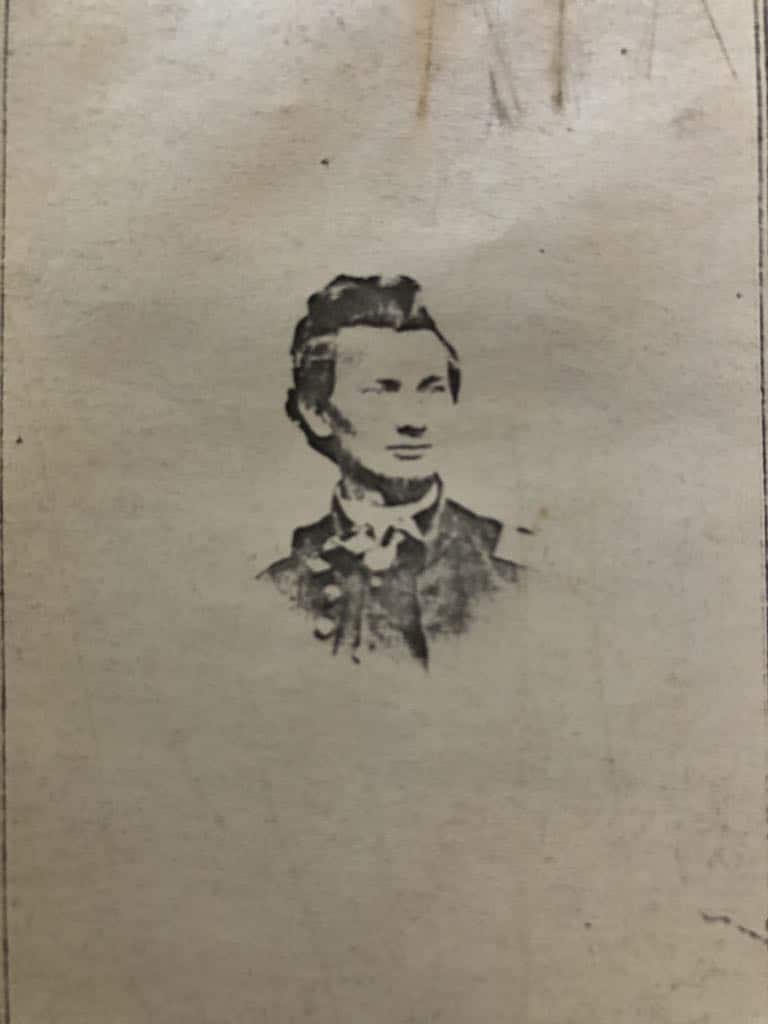
Watching this advance with great interest, Lt. Sears calmly sat on his horse behind his battery, awaiting orders which would never come. Finally, with the enemy advancing within 200 yards and lending an ear to the nervous exclamations and curses of his men to commence firing, he rose in his stirrups, shouting, “With canister, load, aim low and give them hell as fast as you can!”[2] And for 30 minutes, Buckeye hell reigned supreme, as the battery fired more than 100 rounds of canister at the Confederates who repeatedly tried to gain the rise and take the exposed battery. When the Rebels of Brig. Gen. Paul O. Hébert’s brigade came within 100 yards, Sears had his gunners switch to double canister. This horrific volume of fire devasted the front rank, which forced the Texans to move to the right and left in attempt to outflank the fire of 11th’s guns.[3]
This movement, in conjunction with the advance of other southern infantry units of Brig. Gen. Henry Little’s division, caused both the nearby 48th Indiana and 5th Iowa to fall back, leaving the guns exposed. With darkness rapidly falling, the action became a primal melee of bayonets, musket butts, handspikes, rammers, sponge staffs, and fists. The battery’s guns changed hands seven times in less than 45 minutes as the batterymen, along with men of the 5th Iowa, 26th Missouri and several other Federal regiments battled Brigadier General Louis Hébert’s brigade in a brutal hand to hand fight.[4]
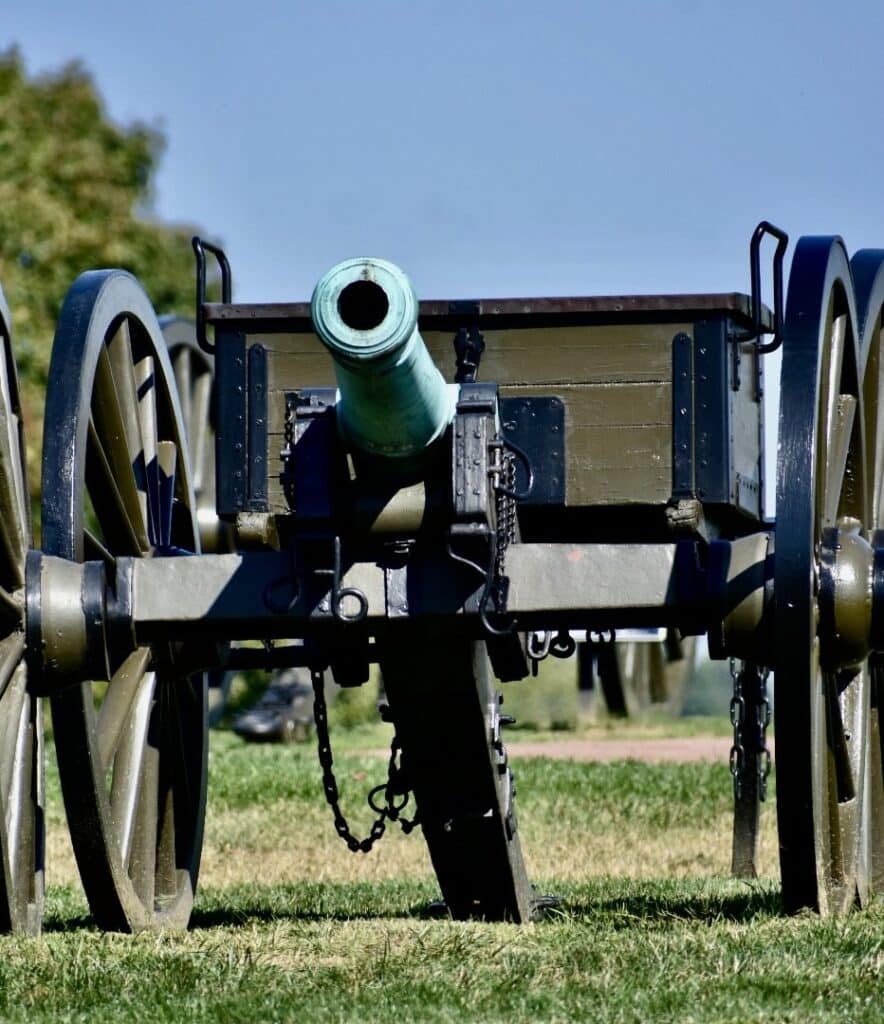
Sears later described this fight: “Before the end it became clear that the position of the guns of this battery had become so much the bone of contention in that fight, that everything else, both flags, the Union and the Confederacy, and even the ‘damned nigger’ were forgotten in that all-absorbing, hand-spike and ramrod, rough-and-tumble, devil-take-the-hindmost fight for those six guns.”[5]
A member of the 5th Iowa later described this fight in a letter published in the Cleveland Plain Dealer: “The Iowa 6th and the Missouri 26th held their position and drove the rebels back until they had expended their ammunition- forty rounds – …….in the close hand to hand fight at the battery the boys took their bayonets off their sabre bayonets and used them as swords and killed lots of rebels. The sabre bayonet is a highly effective weapon if rightly used, ours especially are, the blades being twenty-six inches long and heavy.”[6]
Lieutenant Sears, who was awarded the Medal of Honor in 1892 for his leadership that day, was soon felled by a musket ball through his right shoulder. As he later succinctly described it, “I was wounded and sent home for repairs.”[7]
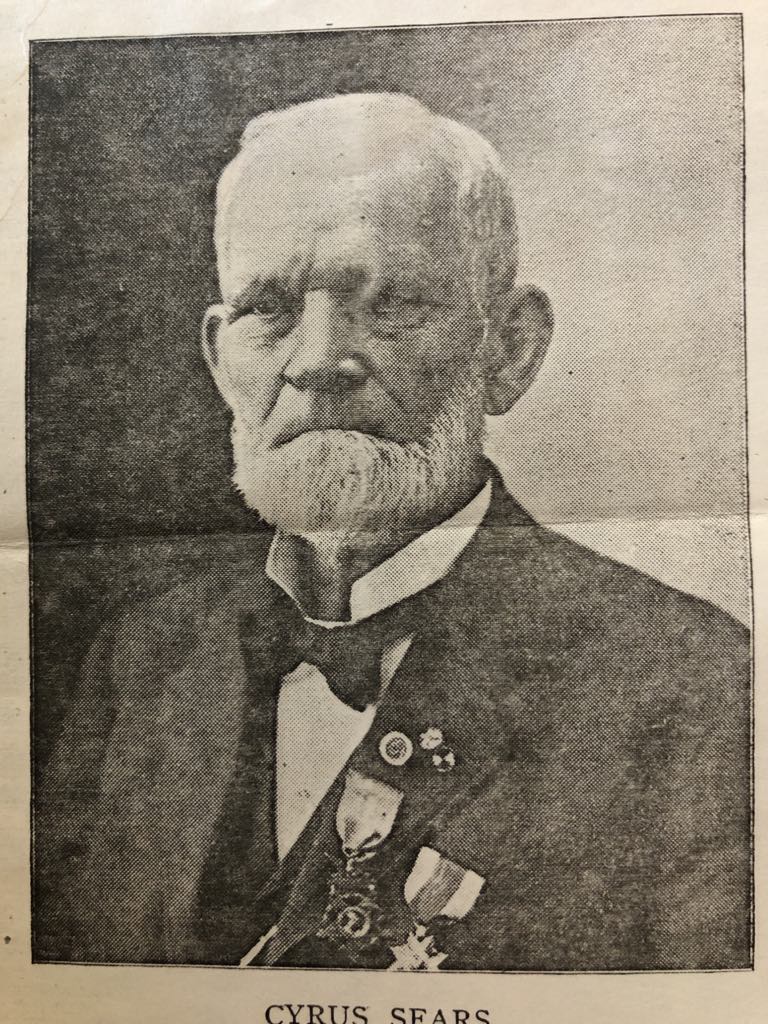
But the scenes of the gallantry of his battery never left his mind. He later related the story of a young native of Wyandot County, John Ettles, who after being wounded by a musket ball through his chest exclaimed, “Well Lieutenant, I guess I got hell today, but I’m going to try to give them two or three rounds yet.”[8] He died serving his gun.
Private David W. Montgomery was in the process of pulling the lanyard when he was “throttled by a ‘Big Secesh’” who Montgomery subdued by drawing an unfired canister round from his haversack and bludgeoning him with it.[9]
With the wounded Lt. Sears carried off the field, 2Lt. Henry Neil now commanded the battery. The 30-year-old Neil was descended from a notable Columbus family, and a graduate of Harvard. He joined the 11th in January 1862. Now, on that dark, smokey hillside, with his infantry support gone, surrounded on three sides, it was apparent that battery’s position could no longer hold. Neil, bloodied after being hit four times by either shell fragments or musket balls, ordered the few surviving battery-men to fall back to the infantry lines reforming to their rear. The victorious ‘Johnnies’ finally gained the 11th’s position, and the battery’s six guns, which were dragged northwards toward Iuka by men of the 3rd Texas Dismounted Cavalry.[10]
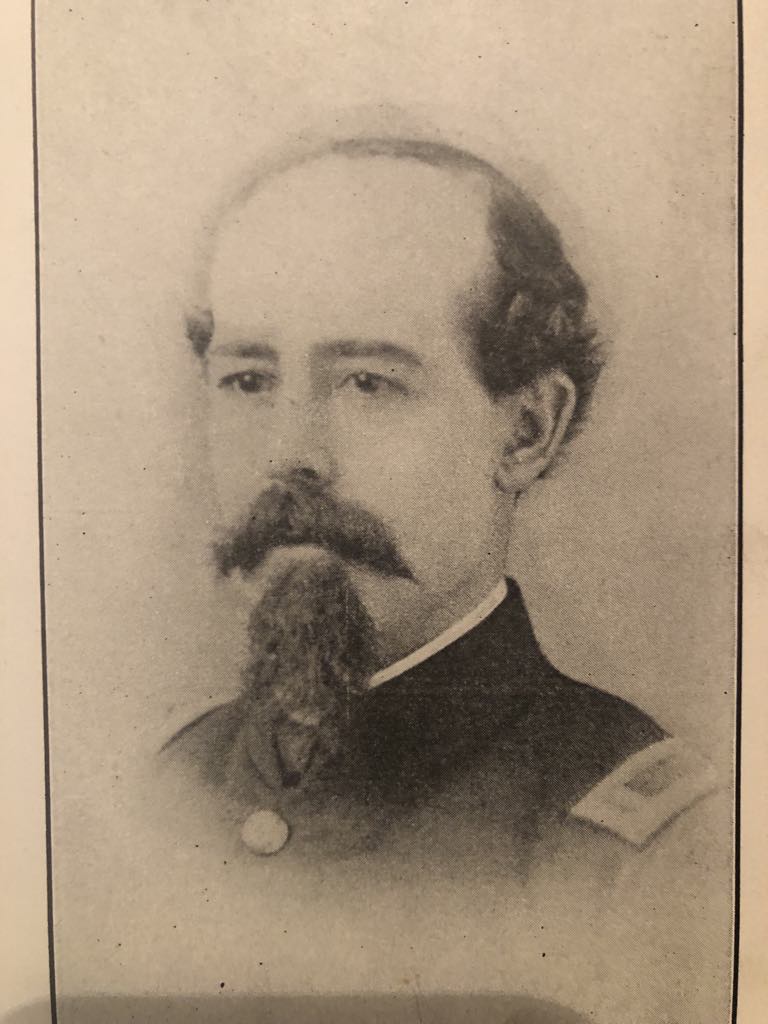
The next morning, September 20, Lt. Neil woke the battery’s survivors from their bivouac. Following closely behind skirmishers of the 39th Ohio as they cautiously crested the hill fought over the previous day, the Federals were surprised to find the Confederates gone. The battery’s six guns, captured at such a high cost, were found a short distance down the hill.[11] The Rebels, hampered by the lack of horses and harnesses to move the guns, had crudely spiked the pieces by driving files into their vents. While the Buckeye gunners rejoiced at finding their guns, they were horrified at the indescribable scene of carnage around the hill.[12]
Dead and dying horses and men lay intermingled. The men found driver John Dean, who had refused an order to leave his limber’s horse team, lying dead still holding the bridles of two of his horses-also dead. Surviving drivers openly wept at the sight of their dead horses. With great emotion and reverence, 16 dead artillerists were buried near a large tree just to the rear of the position they so gallantly defended.[13]
The 11th’s casualties suffered at Iuka were unequaled by any other light artillery battery in the war. Their number killed and mortally wounded nearly equaled the total killed in any light battery during its entire wartime service!
The battery went into the battle with 97 enlisted men and five officers – 18 died at their guns and 39 were wounded. Several were bayoneted at their guns. Forty-six of the 54 men who served the guns were casualties. Finally, the losses suffered by the Eleventh were 22% higher than any other light battery in any one engagement in the war. The loss in horseflesh and equipment was also staggering: 42 horses killed outright, and the remaining 42 rendered unfit for further service.[14]
It was early that same afternoon when Gen. Rosecrans ordered Neil to refit his battered Battery. By slipping away during the night, the Confederate army had successfully stolen a march on the Federals, and Rosecrans was giving chase. Neil’s men went to work removing the files from the vents and repairing bullet-scarred gun carriages. While his gunners worked, Neil asked for volunteers from nearby regiments to fill his ranks.
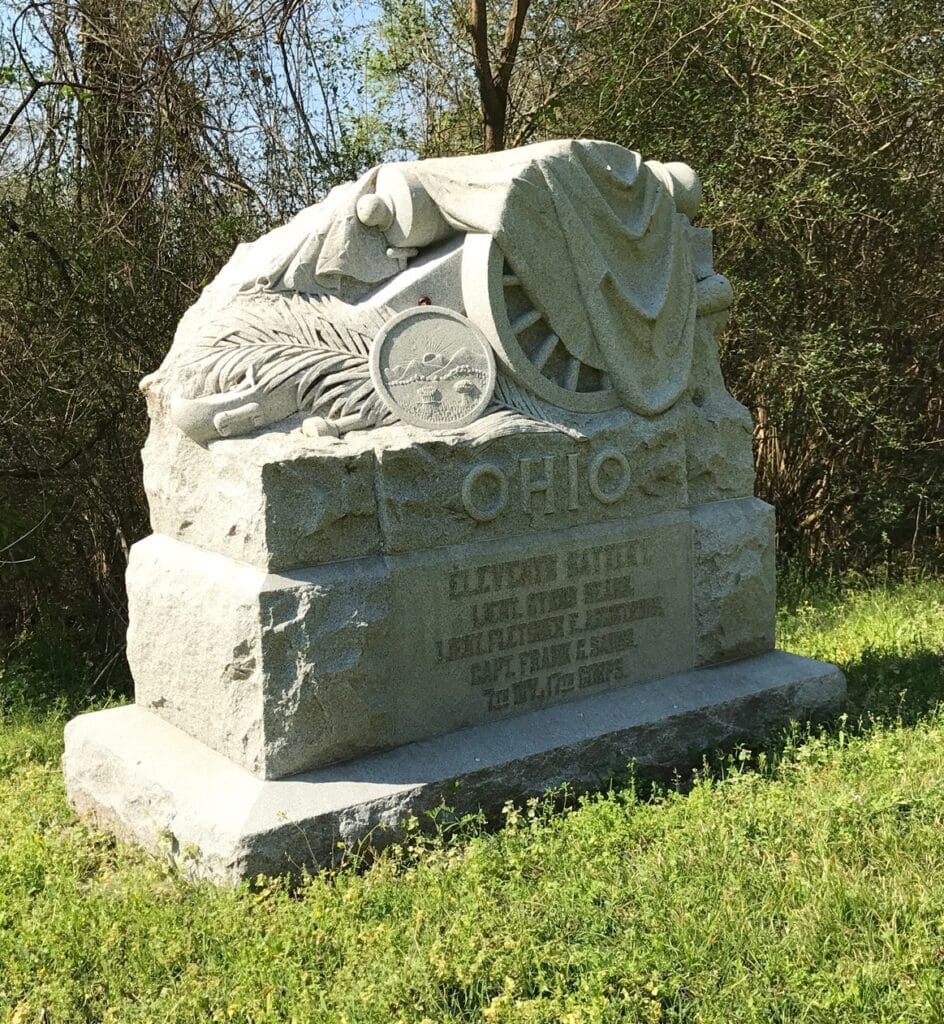
Amazingly, by late afternoon on October 1, the young lieutenant had his command refitted, trained and ready to move. Rosecrans left orders for the 11th that, upon reorganizing, they should rejoin his forces gathering to defend the rail junction at Corinth, Mississippi.[15]
Rosecrans did not forget the hard fighting and sacrifice of his fellow Buckeye artillerymen. In his congratulatory General Orders Number 130, dated September 28, 1862 he stated: “Sands Eleventh Ohio Battery, under Lieut. Sears, was served with unequaled bravery, under circumstances of danger and exposure such as rarely, perhaps never, has fallen to the lot of a single battery during this war.”[16]
Phil Spaugy serves as a senior editor for Military Images magazine, Arms Columnist for The Civil War Monitor, as a historical consultant to Civil War News magazine. He also serves as member of the Gettysburg History Council and consultant to the Adams County Historical Society.
Endnotes
[1] W.F Beyer and O.F. Keydel. Deeds of Valor, How America’s Civil War Heroes Won the Congressional Medal of Honor (Stamford Ct. Longmeadow Press.1992. 92.
[2] Ibid, 93.
[3] Henry Neil. A Battery at Close Quarters, A Paper Read before the Commandery of the Loyal Legion. Columbus, Ohio, The Champlin Press.1906.
[4] Peter Cozzens. The Darkest Days of the War. The Battles of Iuka and Corinth (Chapel Hill NC, 1997. 88-91.
[5] Beyer, and Keydel. Deeds of Valor. 93.
[6] Cleveland Plain Dealer, October 8, 1862.
[7] Beyer, and Keydel. Deeds of Valor. 93.
[8] Masters, Daniel and Strayer, L.M. Echoes of Battle, Annals of Ohio’s Soldiers in the Civil War, 1861-1865. Volume 1: Philippi to Perryville. Columbian Arsenal Press, 2022 and 2024.
[9] Peter Cozzens. The Darkest Days of the War. The Battles of Iuka and Corinth (Chapel Hill NC, 1997), 97.
[10] S.B. Barron, The Lone Star Defenders; A Chronicle of the Third Texas Cavalry, Ross Brigade (New York: The Neale Company, 1908), 108.
[11] Even though the American Battlefield Trust has preserved more than sixty acres of the Iuka battlefield, the hilltop position of the 11th Ohio Battery rises above a busy intersection and is the location of a motel. In 2021 a vehicle ran over the Mississippi Department of History and Archives Marker, which remains missing.
[12] Neil, A Battery at Close Quarters. 12.
[13] Ibid,12.
[14] Ibid, 12.
[15] Ibid, 15 -16.
[16] The War of the Rebellion: The Official Records of the Union and Confederate Armies, Series 1, Vol. 17, No. 1, 76.
Great tribute to a brave commander and crew. I was disappointed that I couldn’t visit Iuka when I was in Mississippi earlier this year.